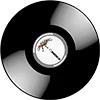
History and subgenres of techno: from Detroit to Berlin. Artists, festivals, and the cultural influence of one of the main genres of electronic music.
Techno — the music of machines, energy, and an endless beat. The style emerged in the late 1980s in Detroit, blending the futurism of electronic synthesizers with a driving, mechanical rhythm. Today, techno is one of the core genres of the global electronic scene.
History of Techno
-
Late 1970s – early 1980s:
The precursors of techno were krautrock (Kraftwerk, Tangerine Dream), disco, and synth-pop. Musicians began using drum machines and sequencers to create a steady, mechanical rhythm. -
Detroit, mid-80s:
Techno was shaped by Juan Atkins, Derrick May, and Kevin Saunderson — “The Belleville Three.” They were inspired by futuristic literature and the urban landscape of Detroit. -
1990s — the European explosion:
Berlin and Frankfurt became the capitals of techno. Legendary clubs emerged — Tresor, Berghain. Artists: Jeff Mills, Carl Cox, Laurent Garnier. -
2000s–2020s:
Techno evolved into hundreds of subgenres — from melodic to industrial. The scene became global, and festivals — massive and iconic.
Key Characteristics
-
4/4 rhythm with a strong kick drum emphasis
-
Tempo: 120–140 BPM
-
Minimal melody — focus on rhythm and atmosphere
-
Instruments: drum machines (Roland TR-909, TR-808), sequencers, analog synthesizers
-
Goal — to immerse the listener in a hypnotic trance
Subgenres of Techno
| Subgenre | Description | Artists |
|---|---|---|
| Detroit Techno | Classic, atmospheric sound | Juan Atkins, Derrick May |
| Minimal Techno | Minimal sounds, maximum space | Richie Hawtin, Ricardo Villalobos |
| Industrial Techno | Harsh, noisy, mechanical | Perc, Adam X |
| Melodic Techno | Melodies and emotion layered over rhythm | Tale Of Us, ARTBAT |
| Acid Techno | TB-303 synthesizer, acid-style basslines | Hardfloor, Chris Liberator |
Techno in Culture
-
Clubs and festivals: Awakenings, Time Warp, Movement Detroit, Tomorrowland (techno stages)
-
Berlin became a symbol of techno thanks to its free club culture
-
Fashion: minimalism, black clothing, utilitarian style
-
Visuals: abstract projections, laser shows, industrial settings
Modern Artists
-
Charlotte de Witte — the queen of hard techno
-
Amelie Lens — energetic, powerful sound
-
Adam Beyer — founder of Drumcode Records
-
Boris Brejcha — minimal and high-tech minimal pioneer
-
ARTBAT, Maceo Plex, Reinier Zonneveld
Interesting Facts
-
The first techno records were marketed as “music of the future.”
-
Berghain in Berlin has one of the strictest door policies in the world.
-
Roland TR-909 and TB-303 now sell for thousands of dollars on the secondhand market.
-
In 2018, UNESCO recognized techno as part of Berlin’s cultural heritage.
Conclusion
Techno is more than a genre — it’s a philosophy of sound and movement, a language of the future born from Detroit’s industrial ruins and transformed into a global culture. Its pulse is the heartbeat of megacities, its rhythm — the rhythm of humanity synchronized with machines.
Over the decades, techno has evolved — from minimalist beats to emotional melodies, from underground raves to global festivals. Yet its essence remains: freedom, experimentation, and energy. It’s music that breaks boundaries and unites people on the dance floor — where time disappears, and only the sound remains.
Techno lives and evolves, discovering new forms, technologies, and names, but its spirit endures — to be the soundtrack of modernity and a symbol of endless motion forward.

